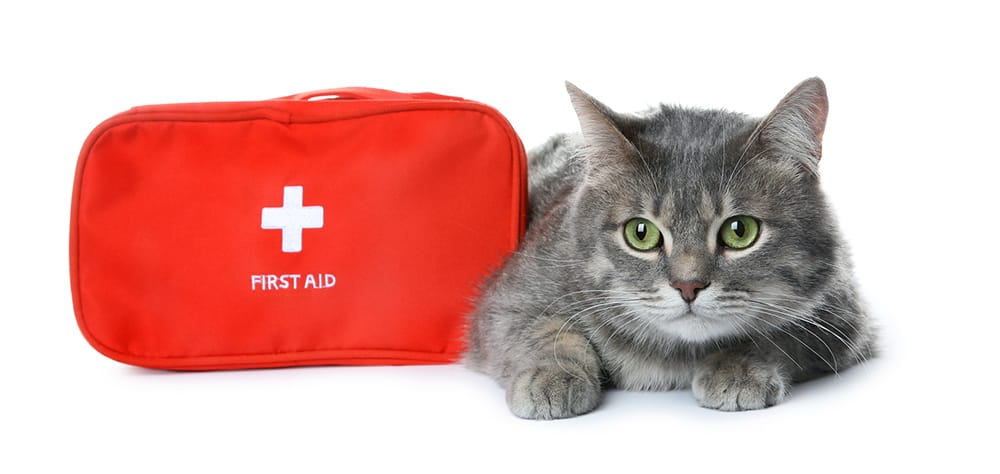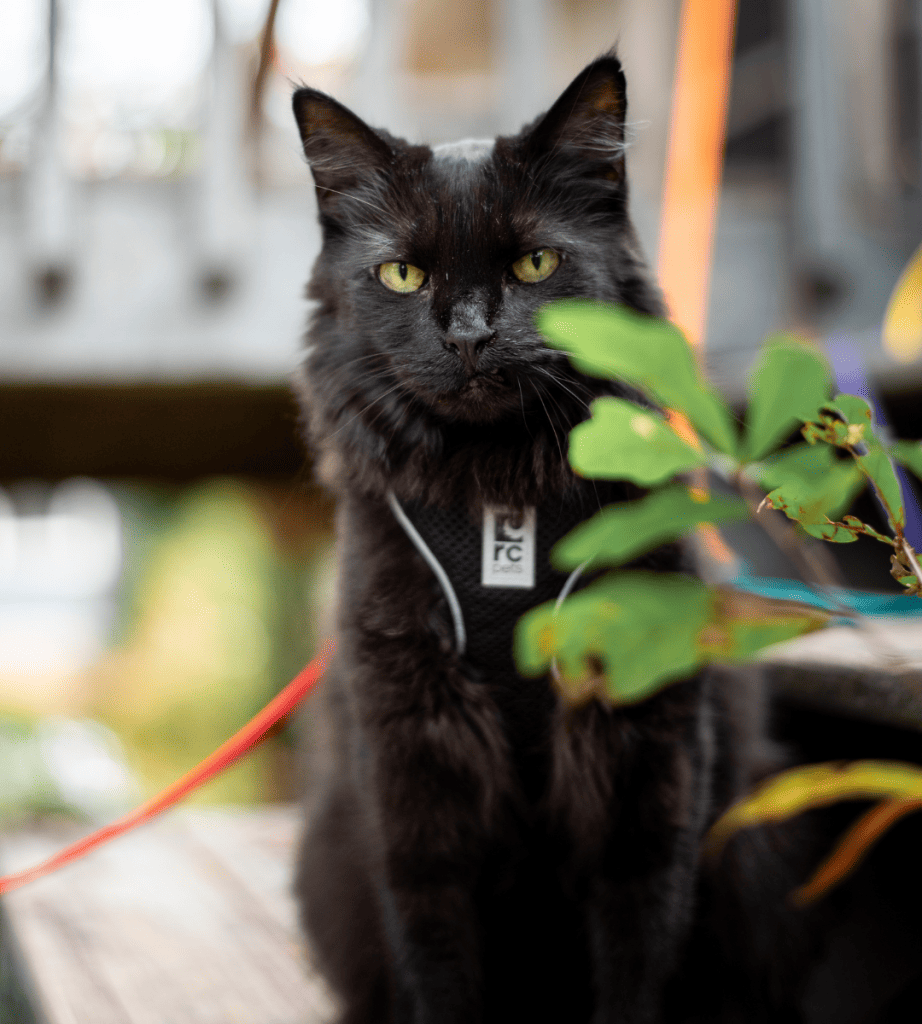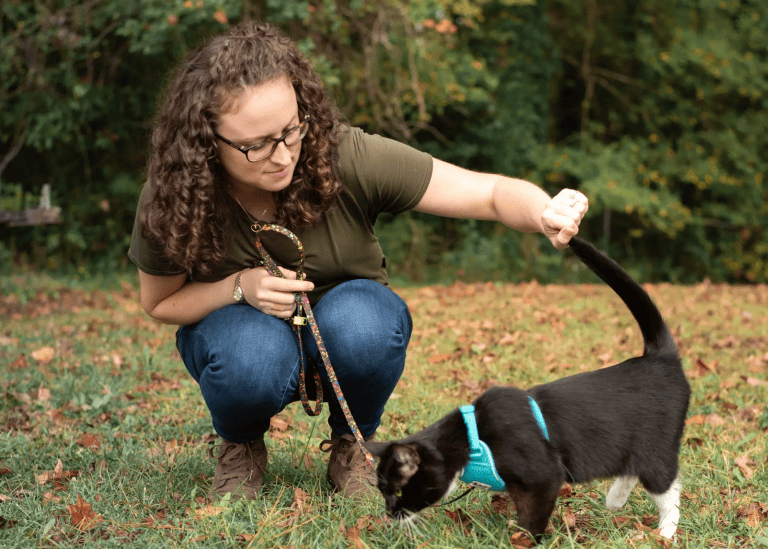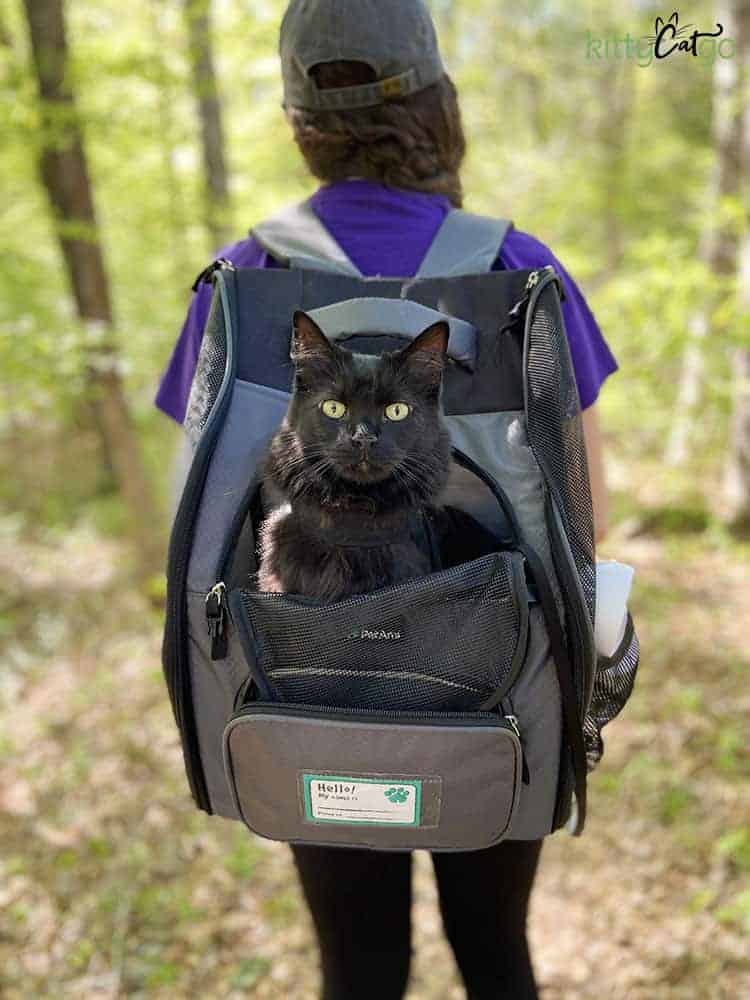21 Essential Items for Your Cat First Aid Kit
Having a cat first aid kit is essential, whether your cat is an avid adventurer or stays indoors. “Always be prepared” may be the Boy Scouts’ motto, but it applies to adventuring with cats as well. Of course we hope you never run into a situation in which you need a first aid kit. Just in case though, you should always have one with you.
The question is… what should you pack in a cat first aid kit? There are many pre-made pet first kits available on the market, but do they really have everything you’d need for a cat?
Interested in an ad-free experience?
Come join the Trailblazers community and get access to ALL KittyCatGO articles with ZERO ads!


*Disclosure: This post contains affiliate links. If you make a purchase using one of these links, I will receive a small commission at no extra cost to you. This helps me to continue creating helpful content. Don’t worry – I would never recommend something I don’t like or use myself!
Putting Together a First Aid Kit for Cats
This list may seem extensive, but these items should get you through any emergency situation that might arise until you’re able to get your cat to the vet*.
- Emergency blanket
- Antiseptic wipes – these are sting free and can be used to clean a cut prior to adding a bandage
- Alcohol prep pads – these are ideal for cleaning the surrounding area of an injury to prevent spread of bacteria
- Vinyl/latex gloves
- Non-adhesive pads
- Self-adhesive bandage – to help keep the would dressing in place. You don’t want to use anything sticky on your cat’s fur!
- Tape
- Scissors
- Hydrogen peroxide – to induce vomiting. Never apply hydrogen peroxide to your cat’s wound/skin!
- Styptic pencil – to help stop any bleeding
- Tick removal tweezers
- Q-tips
- Instant cold compress
- Oral syringe
- Saline eye wash
- Small flashlight
- Liquid Benadryl tablets – to treat any stings. Liquid tablets are recommended because you can get your cat to swallow it more easily. Check with your vet for proper dosing.
- Sting relief pads
- Tongue depressor
- Rectal thermometer
- Towel – to help restrain your cat if needed
Don’t forget to check your kit every few months for items that may have expired or need to be replaced/restocked.
*Please remember that first aid is only meant to be temporary care. You should always take your cat to the vet for a wound or injury.

Looking for a supportive cat community?
The KittyCatGO Adventure Team Facebook Group is the place you’ve been looking for.
This online community is full of cat lovers and cat adventurers from all over the world, ready to welcome you, support you, and answer any questions you have.
Don’t Forget Human First Aid Items!
If you really want to be prepared, you should carry some things in your first aid kit for humans too! Everything mentioned above for cats cat be used for humans too of course, but there are a few additional things you should add for yourself that shouldn’t be used on your cat.
- bandaids
- tourniquet
- hand sanitizer
- pain relief medicine
Purchasing a Cat First Aid Kit
I have yet to find a pet first aid kit that includes everything you might need. Most of them are intended to be smaller and more travel-sized. There’s nothing wrong with that, of course. Sometimes you may need a smaller, travel-sized version. Having a full kit is a good idea too though.
My recommendation would be to purchase a pre-packaged pet first aid kit and then purchase any additional items separately that are missing. If you aren’t able to carry the full kit with you on your adventures, you can carry your travel-sized version on the go and leave the full kit in your car.
Recommended Pre-packaged Pet First Aid Kit: Arca Pet First Aid Kit
Taking a Cat First Aid Class
I don’t know about you, but if my cat and I were to find ourselves in an emergency situation, I can’t say that I’d know what to do. I’m not a vet, nor do I have any medical training of any kind (human or pet).
Thankfully there are online pet first aid classes available if you’d like to become more knowledgable and prepared. America’s Pet Health and Safety Coach, Arden Moore, actually teaches first aid classes that are geared specifically for cats! Topics covered include:
- choking management
- rescue breathing
- heat and cold-related injuries
- how to transport an injured pet
- what items should be included in your pet first aid kit
- three different pet CPR techniques
- bleeding protocols
- poisonings
- insect or snake bites
- performing a snout-to-tail assessment (for wellness or injury)
I’m looking forward to taking her class next month and will be sure to report back on how it went!
I’m not affiliated with Arden or her class at all. I’m just sharing about it because I think it’s awesome!
KittyCatGO LIVE Episode 3: Cat First Aid

About the Author
Emily Hall, ABCCT is a certified cat trainer and cat adventure enthusiast. As a “mom” to five cats and one dog, she has been writing in the pet industry for over 10 years, with a focus on traveling and adventuring with cats.
Emily has a passion for getting out there and doing more with her cats – for pushing the bounds of cat expectations! She and her husband enjoy hiking, road-tripping, camping, and canoeing with their three cat adventurers. Read more about Emily here.







I love that our fur babies are no longer assumed to be nothing but laze about the house pets. Everyone has always thought me insane because my babies are treated like the small geniuses they are!
I have run into a huge problem that no one has been able to help with so maybe you have some- my current babies developed horrible skin problems when we moved and I can’t get them cleared up. The vet says Sammie is allergic to flea bites. He has obsessively chewed and clawed at his body to the point half his hair is gone and he has scabby patches (what’s left after I spend hours with him on my lap trying to help him find relief and get some rest). 24/7 he frantically chews and scratches. Topical flea oil caused a bald spot on his back and the fleas still abound. Baths only help briefly and I can’t bathe him daily without making it all worse. Lidocaine spray helps but again only briefly. While steroids and benedryl help, it’s hit or miss getting the meds in him. (yes he’s a genius and VERY suspicious so won’t eat anything with meds in it.)
We are both miserable and sleeping little as he won’t sit on anything other than my lap or bare wood, metal or other cool surface where nothing can sneak up on him.
Do you have any thoughts? Have you ever heard of such a situation? Would be so grateful for any thoughts as outside playtime being just around the corner and we really want to go play!
Hi Michelle – I’m so sorry to hear you’re dealing with such a bad flea problem. I would suggest talking with your vet about alternative flea treatments. Perhaps a different topical than the one that caused the bald spot, or even a chewable tablet or flea collar. There are several options for flea preventatives, and that sounds like the most important thing for Sammie right now – to get the fleas under control. You’ll also need to treat your house, not just him. If his fleas are so bad, that means they’re in your house too. Believe me, I’ve been there myself before and know what a pain that can be. I’ve had good luck using FOOD GRADE diatomaceous earth (you have to make sure it’s food grade and not the other kind) to treat my home. And I’ve even had to have a pest control company come flea bomb our house before. It’s not fun, but it works.
Having a cat first aid kit is absolutely crucial for any responsible cat owner. Whether your feline friend is an indoor or outdoor cat, accidents can happen anytime. It’s better to be prepared for the unexpected. While some pre-made pet first aid kits are available, it’s essential to customize yours to cater specifically to a cat’s needs. Among the 21 essential items, include gauze, bandages, hydrogen peroxide, antiseptic wipes, and tweezers. Additionally, don’t forget to invest in a durable and comfortable pet collar with identification tags, as it will help ensure your cat’s safety and quick identification if they ever wander off. Stay prepared, and prioritize your cat’s wellbeing!